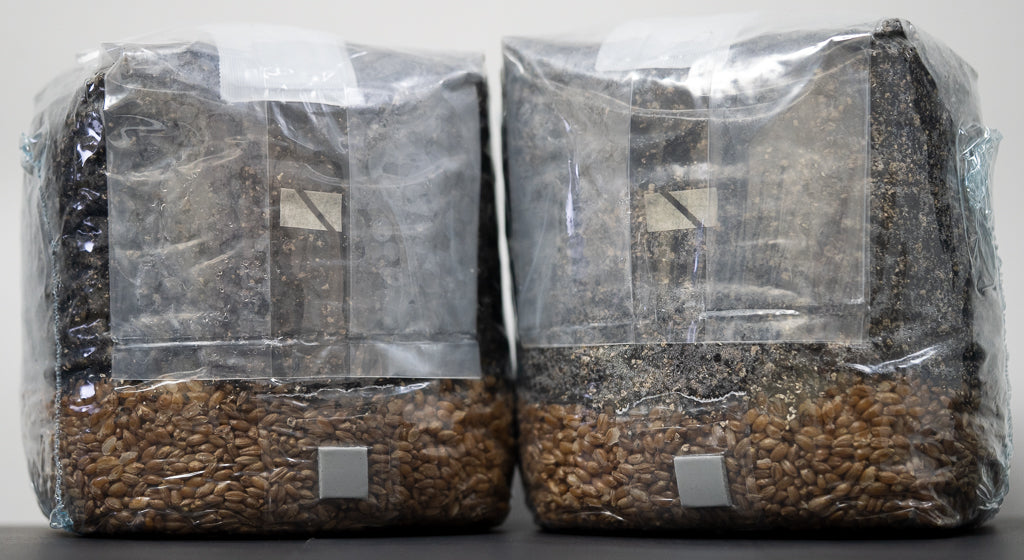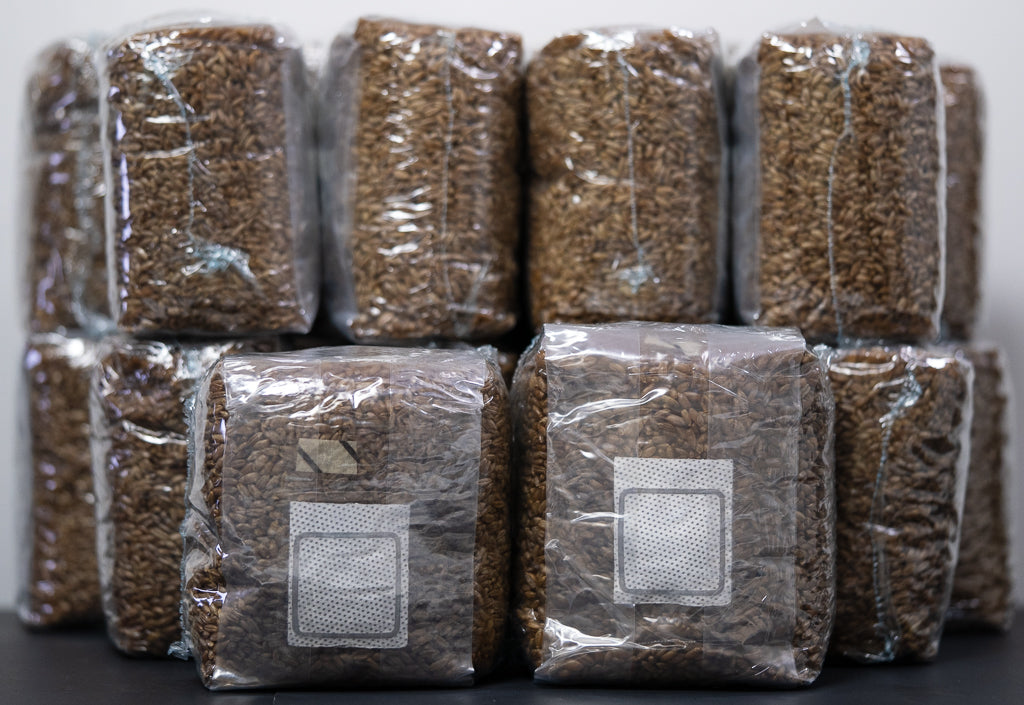Shittake Mushrooms Lentinula edodes Golden Oak mushroom; Oakwood mushroom
Alias: Saw-tooth Oak mushroom; Black Forest mushroom; Black mushroom; Golden Oak mushroom; Oakwood mushroom
Incubation Temperature: Between 55 - 75F is the consensus. Being cultivated for over a thousand years, there is a hardiness to lab cultivate strains that can handle temperature fluctuations.
Fruiting Temperature: Shiitake mushrooms prefer a cold shock before fruiting. To accomplish this, bring your bags to 36 - 42F once the bag has colonized. This will signal the fruiting process to your mycelium mass. 64-70F
Spore Print Color: White to buff
Identification: The shiitake mushroom gets its name from the tree it is found on in Asia. Shiitake means shii mushroom. Identifying the tree mushrooms are growing on can be the first step to identification. In addition to shii trees and other chinquapins, shiitakes love chestnut, oak, maple, beech, sweetgums, poplar, hornbeam, ironwood and mulberry. Shiitake are saprotrophs and love decaying hardwood from broadleaf tree species. Shiitake are slow to grow and develop with the first fruiting cycle taking up to 18 months outdoors. Once they begin to fruit, you will see small black to dark brownish caps. As they grow, the caps become lighter brown and more convex as they age. The gills are white and unattached from the stem, which is smooth, light brown and fibrous without rings.
Growing Outdoors:
Shiitake mushrooms are the world’s second most popular cultivated mushroom. The button mushroom takes first place on that, but the reward for the best outdoor mushroom to grow goes to shiitake. With a little extra work upfront and time, you can turn a small space outdoors into a shiitake ‘farm’ that can produce for years. I am sure you have heard of plugs or plug spawn. Plugging logs takes patience, you have to wait 18 months to see if it worked! After that hard work, you will be rewarded with shiitake logs that will produce regular flushes each spring and fall for up to 5 years. You can also use shiitake as a myco-restorative for your garden to help build beneficial soil. They love breaking down hardwoods and will attract earthworms like most mycelium. Shiitake that are exposed to direct sunlight during the growth cycle produces higher amounts of vitamin D, so try growing in a location that will give it early morning sunlight.
Growing Indoors:
When growing shiitake indoors, your first step is choosing the right kind of substrate. Hardwood is essential. Sawdust substates will work, but you want a little more surface area for the mycelium to colonize. As they naturally break down the logs over time, they will grow hardy and healthier the closer you can mimic their natural environment. Using a grow bag indoors has one extra step to fruiting that other types of mushrooms do not require, a cold cycle. To accomplish this, once your entire substrate is colonized, you will need to cool it down to at least 36-42F ( standard refrigeration temperatures ) for at least 12-24 hours. After this pins will begin to form around 64F. At any stage of the development indoors, you want to maintain temperatures below 77F, they are not fans of the warmth and will not grow above that. Shiitake mushrooms love humility and will want 95-100 relative humidity for the first few days of the fruiting process, bumping down to 80% once pins begin to develop. If you are using a tub or fruiting chamber and not fruiting in the bag, make sure after your cold cycle you allow pins to begin before transferring, letting the colonized block reach full temperature again for a healthy flush. You can harvest multiple flushes from one block.
Indoor mushroom growing is a great way to jump into urban farming and subsistence farming. Shiitakes pack a punch in the nutritional department. USDA data sheet for fresh shiitake mushrooms. Dried shiitake data sheet.
Favorite Substrates:
If you are creating plugs, they will colonize well with rye grain, brown rice flour and straw. Use spawn to transfer to sterilized wood plugs. Shiitake prefers broadleaf hardwoods and southeast Asian evergreens ( their namesake, Castanopsis cuspidata ). Sterilized hardwood compost works well for indoor growing, as it will mimic conditions it would find in the wild better than sawdust mixes.
Here are a few articles I found along the way
Forest farming of shiitake mushrooms: An integrated evaluation of management practices
Why Shiitake Mushrooms Are Good For You
Shiitake Mushroom - Purported Benefits, Side Effects & More - MSKCC.org


